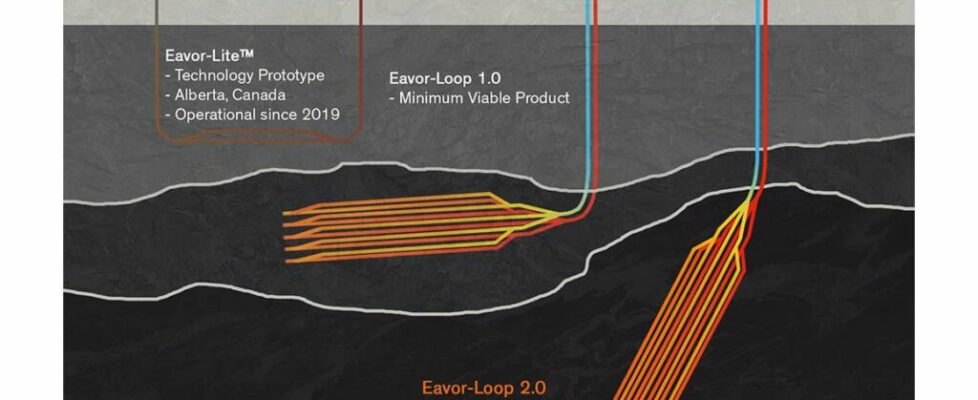Geothermal Power Could Produce Abundant Clean Energy, If We Let It
Two to three miles below our feet lies a nearly inexhaustible source of energy, and a number of startups are working to harness it to provide carbon-free electricity. Unlike solar and wind generation, which depend upon a shining sun or a stiff breeze, geothermal power could offer consistent 24/7 energy derived from heat that increases the deeper into the earth’s crust we go.
“Recovery of just 1–2% of the thermal energy stored in hot rock at 3 to 10 km depths would be sufficient to meet world energy consumption for many centuries,” noted a report at the World Geothermal Congress in 2021. The geothermal gradient averages 25–30 degrees Celsius per kilometer, originating from the decay of radioactive elements and residual heat from the earth’s formation.
The most easily accessible geothermal resources in the U.S. are located on federal lands in the western states. But proposed geothermal projects have been stymied for years by having to undergo as many as six environmental reviews under the National Environmental Policy Act before proceeding.
In contrast, oil and gas projects have been granted categorical exclusions, which exempt them from detailed environmental reviews due to their minimal impact. In April the Bureau of Land Management, which administers 245 million acres of federal land, finally adopted categorical exclusions for geothermal energy exploration.
As of 2023, traditional geothermal power generated only about 0.4 percent of the total electricity in the U.S., mainly because it’s currently limited to areas where steam is produced by water heated in naturally occurring fissures within near-surface hot rocks. A National Renewable Energy Laboratory report estimates that tapping heat at depths between three and seven kilometers (two to four miles) could generate over 4,200 gigawatts in the United States. That’s more than three times our current generation capacity of about 1,200 gigawatts.
Several startups are tackling the considerable technical hurdles for accessing heat at these depths. Using drilling and fracking techniques developed by the oil and gas industry, Fervo Energy is now constructing a 400-megawatt enhanced geothermal power plant at Cape Station in Utah. The company has contracts to supply 320 megawatts to Southern California Edison—enough to power 350,000 homes.
The Canadian company Eavor uses complex drilling to connect two vertical wells with many horizontal multilateral wellbores to create a giant underground closed-loop system. This Eavor-Loop system circulates a proprietary fluid to harvest heat and generate electricity. Eavor is currently drilling wells in Germany 15,000 feet underground where its loop system will extend about 200 miles. The loop will circulate hot water to heat homes and businesses and generate 8.2 megawatts of electricity.
Other companies are pursuing even more ambitious and technically challenging efforts to draw heat from superhot rocks even deeper down where the temperature exceeds 400 degrees Celsius. Accessing such temperatures could deliver up to 10 times more energy than conventional geothermal wells. An environmental think tank, the Clean Air Task Force, estimates we could generate 4,300 gigawatts by developing just 1 percent of superhot rock energy in the United States. Depending upon location, this could involve drilling wells six to nine miles deep. The deepest well ever drilled was the Kola Superdeep Borehole in the Soviet Union, at 7.6 miles.
Several U.S. companies are developing and testing drilling techniques that can withstand high underground temperatures by initially drilling into superhot rocks in volcanic zones closer to the surface. Hephae Energy Technology has recently announced its Pandora210 directional drilling tool, which can work at up to 210 degrees Celsius. The company has signed an agreement to deploy its drilling technology in collaboration with the Turkish geothermal company GMK Enerji. The startup boldly claims its technology will enable the drilling of 1 million geothermal wells into superhot rocks globally by 2050.
AltaRock Energy has teamed up with Quaise Energy to deploy Quaise’s novel millimeter wave drilling technology to reach superhot rocks. Instead of mechanical drilling, Quaise’s directed energy technology increases drilling speeds by 10 times through melting and vaporizing rock for removal. AltaRock has begun a demonstration project drilling into superhot rocks at the relatively shallow depth of 10,000 feet near the Newberry Crater in Oregon. The initial project aims to develop 35 megawatts of generation capacity with the potential to grow to 2,500 megawatts, enough to power 2.5 million homes. (For reference, the capacity of the two North Anna nuclear power plants in Virginia is 1,800 megawatts.)
Estimates suggest that superhot rock geothermal could supply electricity at costs between $20 and $46 per megawatt-hour, comparing favorably with natural gas, wind, and solar power, currently at $37, $38, and $36 per megawatt-hour, respectively.
With some federal regulatory barriers finally being eased, geothermal power could become a significant source of steady, carbon-free renewable electricity for Americans.
The post Geothermal Power Could Produce Abundant Clean Energy, If We Let It appeared first on Reason.com.
